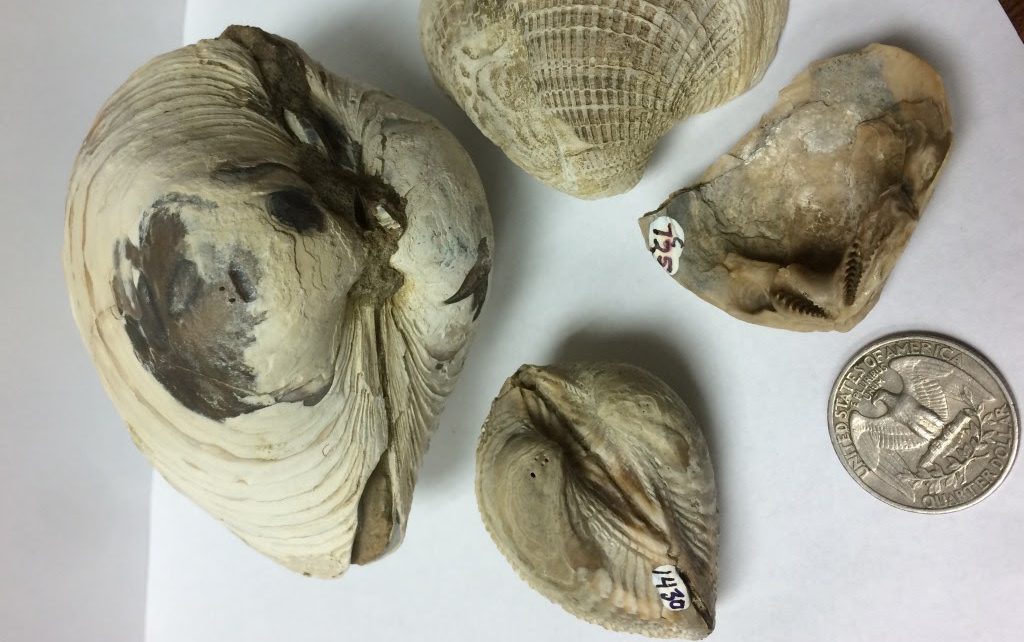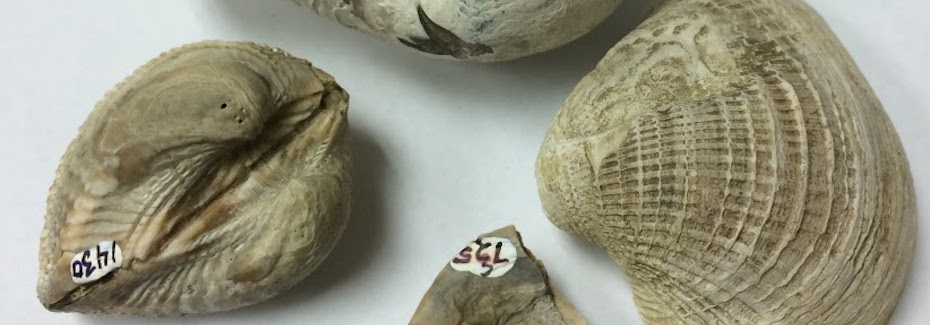Dr. Andrea Dutton — Assistant Professor in the Department of Geological Sciences — and colleagues at the University of Michigan have utilized a new technique of analysis to reconstruct Antarctic ocean temperatures that support the idea that the combined impacts of volcanic eruptions and an asteroid impact brought about one of Earth’s biggest mass extinctions 66 million years ago.
Their research, published in the journal “Nature Communications,” used a recently developed technique called the carbonate clumped isotope paleothermometer to analyze the chemical composition of fossil shells in the Antarctic ocean. This analysis shows that ocean temperatures rose approximately 14 degrees Fahrenheit, and links these findings to two previously documented warming events that occurred near the end of the Cretaceous Period: one related to volcanic eruptions in India, and the other, tied to the impact of an asteroid or comet on the Yucatan Peninsula in Mexico.
To create their new temperature record, which spans 3.5 million years at the end of the Cretaceous and the start of the Paleogene Period, the researchers analyzed the isotopic composition of 29 remarkably well-preserved shells of clam-like bivalves collected on Antarctica’s Seymour Island.
The Cretaceous–Paleogene (K–Pg) boundary is widely associated with the mass extinction that occurred 66 million years ago. It is actually a physical boundary usually marked by a thin band of rock found in geological structures all around the world. Scientists have shown that the K-Pg boundary contains iridium, also found in asteroids, meteorites and comets, bolstering the theory that an asteroid killed most of the creatures of the Cretaceous Period.
As a graduate student herself at the University of Michigan, Dutton studied the fossilized remains of Seymour Island bivalves with the hope of reconstructing past climate change across this critical interval of time. However, the only experimental evidence available at the time revealed a combined signal of temperature and salinity of the coastal waters, without being able to isolate the temperature signal on its own.
“Now, years later, everyone is using this new tool called clumped isotope paleothermometery, which is a bit different than the traditional method,” said Dutton. “This technique is only a function of temperature. Salinity has nothing to do with it. We’re looking at the clumping of oxygen isotopes rather than the relative amount of oxygen isotopes in the shell, and this is helping us re-interpret the data.”
The data show two significant temperature spikes. The first corresponds to the eruption of the Deccan traps flood basalts. The other lines up exactly with the asteroid impact, which, in turn, may have sparked a renewed phase of volcanism in India. Intriguingly, both events are associated with extinction events of nearly equal magnitude on Seymour Island, Antarctica.
We have evidence…that climate change is linked to both of these extinction events… — Dr. Andrea Dutton
“…We have evidence on this site on Seymour Island in Antarctica that climate change is linked to both of these extinction events, right before the boundary and right at the boundary,” said Dutton. “If you look at what types of species that went extinct during the first extinction pulse, they’re different than the types that went extinct during the second pulse. That indicates that it may have been a different kill mechanism for those two different extinction pulses. It’s quite likely both the volcanism and the asteroid were to blame for the ultimate mass extinction. The Deccan Traps weakened the ecosystems before the asteroid slammed into the Earth— it’s consistent with an idea called the press-pulse hypothesis: a ‘one-two punch’ that proved devastating for life on Earth.”
Link to the article in Nature Communications (open access):
- End-Cretaceous extinction in Antarctica linked to both Deccan volcanism and meteorite impact via climate change — Nature Communications
Links to Media Coverage:
- The 1-2 Punch of the End-Cretaceous Extinction — Discover Magazine
-
Warming pulses in ancient climate record link volcanoes, asteroid impact and dinosaur-killing mass extinction — Science Daily
-
Ancient global warming spikes suggest dinosaurs died of a double disaster — Science Magazine
- Double Whammy Dinosaur Extinction — CTV News Channel via Facebook

